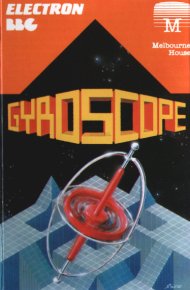This article needs additional citations for verification .(January 2009) |
| Gyroscope | |
|---|---|
 Acorn Electron cover art | |
| Developer(s) | Catalyst Coders |
| Publisher(s) | Melbourne House |
| Programmer(s) | John Nixon & David Wainwright (Acorn) "Dubree" (C64) Steve Lamb, Tony Mack & Dave Dew (Spectrum) |
| Platform(s) | Acorn Electron, Amstrad CPC, BBC Micro, Commodore 64, ZX Spectrum |
| Release | 1985 |
| Genre(s) | Action |
| Mode(s) | Single-player |
Gyroscope is an action video game published by Melbourne House in 1985 for the Acorn Electron, Amstrad CPC, BBC Micro, Commodore 64, and ZX Spectrum. It is based on the Atari Games arcade title Marble Madness . Melbourne House would go on to publish the official ports of Marble Madness for the ZX Spectrum and Amstrad CPC, but these were not based on Gyrosope.